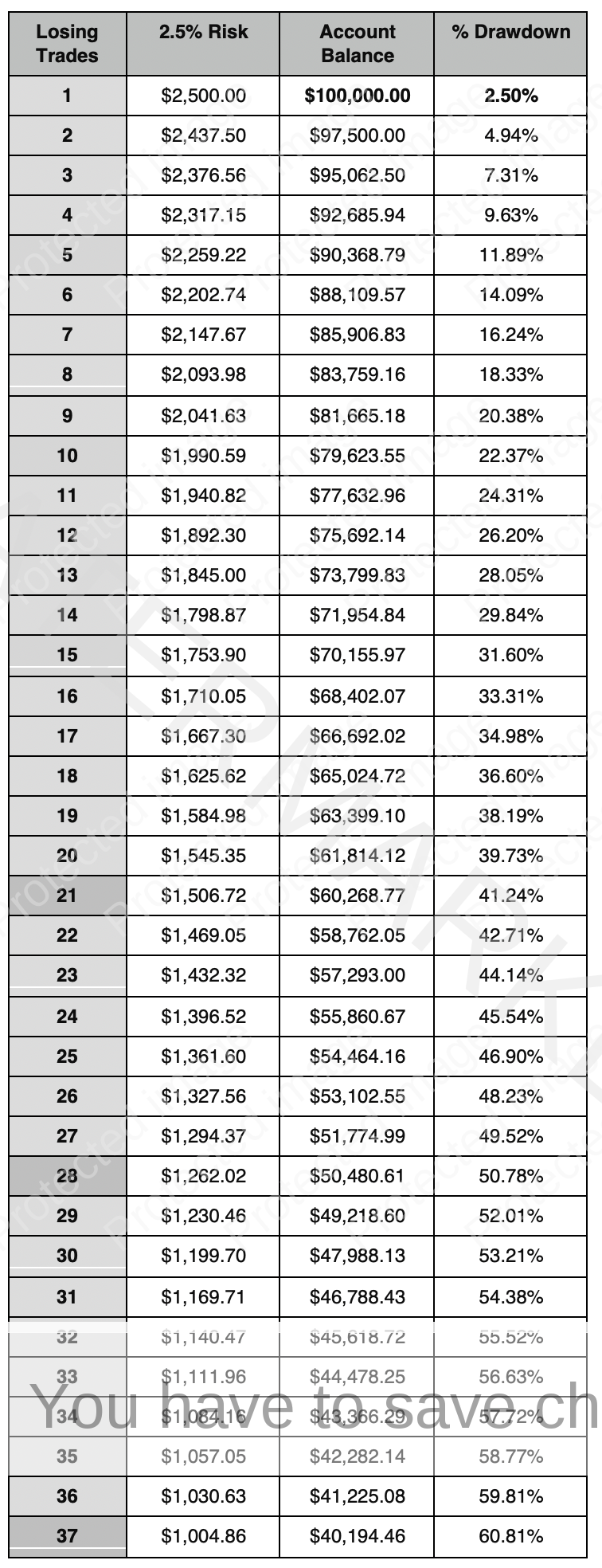Risk Sensitivity Analysis
My August general article is slightly different this month. After recently speaking with an Active Trader, we got to speaking about risk and money management. David spoke a lot about money management and often said if there was only one lesson he could teach his boys about trading it would be on money management. Turning to what sparked our discussion was the following question:
“I have had a number of losing trades and was wondering should I adjust my risk per trade?”
Risk and money management is one of the most important, if not the most important aspect in trading. It is an essential part of trading. By having appropriate risk formulas and strategies within your trading plan you have the benefit of being around for many years to come.
The aim of money management is to generate superior risk-adjusted returns whilst maintaining a proactive and rigorous approach to risk management. Your risk management practices should be integrated into your daily process and based on mathematical formulas – this goes back to David Bowden’s point of having a two-page document outlining your trading strategy. He suggests that it should be a combination of strategies and formulas.
As an example, let’s say you have back-tested a market and have found that ABC’s work particularly well on your market. The most profitable exit type is the Stock Exit Strategy. After having committed all the time and energy in testing every ABC across your market, you have put together your trading plan which outlines your entry, exit, trade management, risk, and money management plans. At this point, you should now be committed to taking every signal that the market has to offer.
Based on the risk profile of 2.5% of the total account value as the risk per trade, which is ONLY 2.5% of your capital exposed to the trade (subject to liquidity), leaving 97.5% of the portfolio available (depending on the margin levels enforced by your broker). As outlined in the Smarter Starter Pack, the total position size will be dictated by the entry limit and stop-loss, allowing the system to automatically exit a position before it exceeds the 2.5% risk threshold.
Table 1 below illustrates the Sensitivity Analysis of 2.5% per trade, which can be outlined in your trading plan. It is based on a $100,000 account. Sensitivity Analysis is also commonly known as the ‘risk of ruin’, which measures the maximum risk on consecutive losing trades before a substantial drawdown of the account occurs, often ‘ruining’ the account.

It’s Your Perception
Robert Steer
As the table highlights – it will take 21 consecutive trades with a maximum risk (2.5%) to lose 41.24% of capital. This table doesn’t take into account brokerage and financing costs but assumes it’s as a total risk. That essentially means you need to have 21 losing trades in a row. All trades would enter you at the worse possible entry and exiting you at your stop-loss.
Based on research, it suggests that a simple ABC Trading System on any one market approximately generates around 16 trades per annum. It is very improbable to see this consecutive number of losing trades in a given year and reduces the likelihood of losing 41.24% of capital in any given year.
If you have ProfitSource you should be able to test a market with the historical data. My studies show that the ABC system has never had more than 8 consecutive losses in a row – of which during this time the system only experienced a -13.10% drawdown, compared to the Sensitivity Analysis claiming to have drawdown -18.33%. Of course, in the future this can change but hindsight is often a good exploration for foresight.
This is what ‘ABC Trading’ is all about – history repeating. The reason for this arises from the fact that losing trades are automatically exited immediately, allowing profits to outweigh losses.
You need to be confident that the formulas and strategies embedded within your Trading Plan will be profitable at the end of the day. Do the back testing and work the probabilities and statistical data out to emphasis so. You should have the confidence and benefit of having done the research and development and understanding periods of your market.